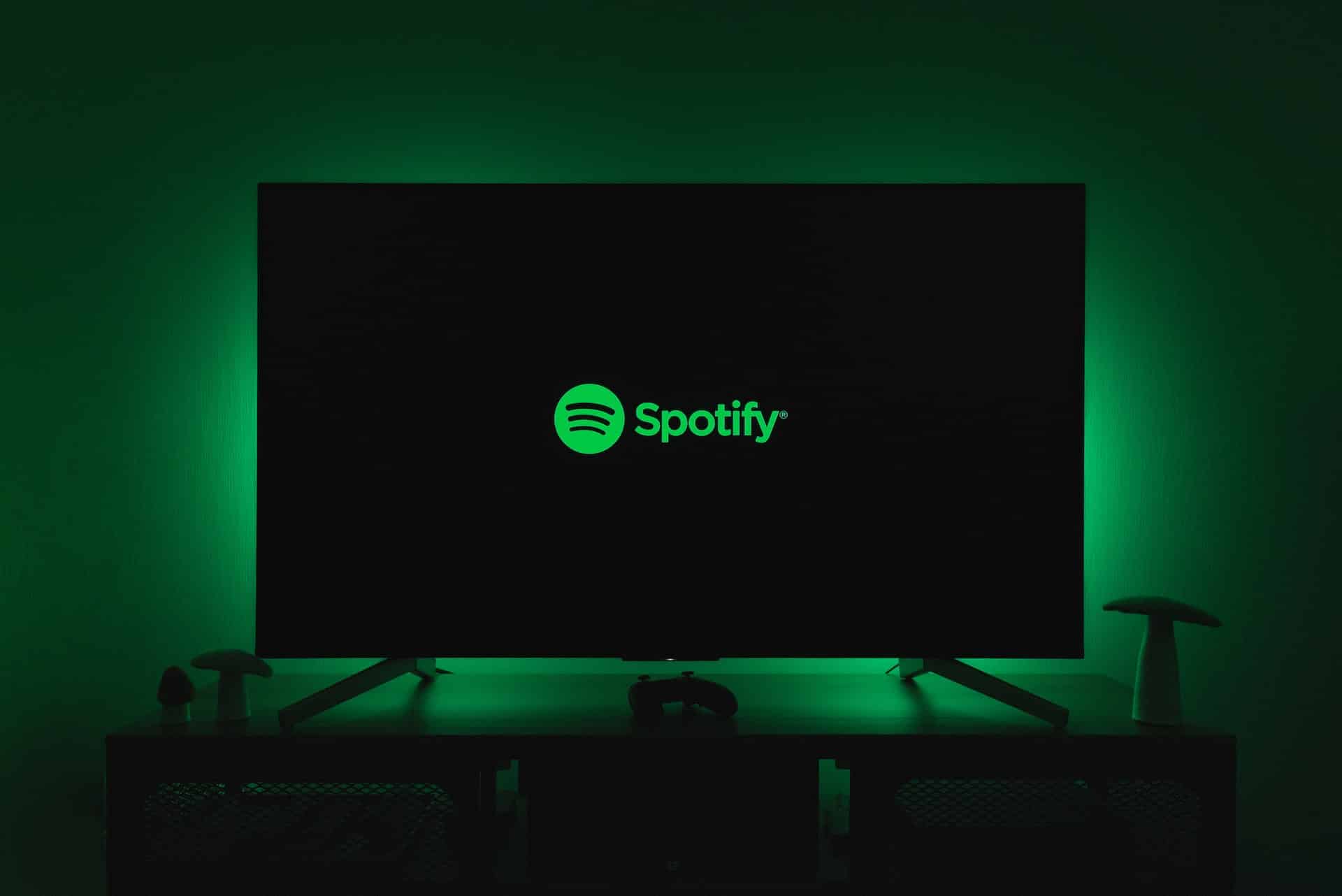Do we have some music lovers here today? I am sure we have. Okay, so what platforms do you guys use to stream your favorite music? Did you say Spotify? Of course, you did because that's the most famous platform for music nowadays.
Spotify is an audio streaming and media service providing platform. It offers a variety of podcasts and music to its users. This audio-streaming platform has emerged globally over the years. It has drawn users from all over the world.
The question arises: how Spotify got so famous? Well, Spotify actually worked on providing advertisement-free service to its users. This attracted the users because people used to feel annoyed by advertisements between songs on other platforms.
Today's article will be a treat for music listeners since we will discuss the operations of one of their favorite audio streaming platforms in the article. Moreover, we will conduct a Spotify PESTLE Analysis to see what external factors impact the operations of Spotify.
Before heading toward the PEST analysis, let's look at the history and current operations of Spotify so that you get to know more about it.

The roots of Spotify can be traced back to 2006 when Daniel Ek and Martin Lorentzon built a music streaming application. However, they couldn't launch the application in the same year because some negotiations were taking place with the record companies.
Two years later, the application of Spotify was launched for computers. The app was only available in European countries like the UK, Sweden, Finland, Spain, France, etc., at that time. The application model was quite different then compared to what we have now.
Users could only excess the music library without being able to download anything. Moreover, free access was only given to users invited to the application. While users who weren't invited had to pay to access the application.
Spotify changed its model in 2009 and made its application more compatible with smartphones. As a result, Spotify grew as more users subscribed to the app. In 2011, Spotify made its application accessible in the US by signing contracts with record labels in the US.
The number of Spotify users kept on increasing over the years. Spotify then shook hands and switched various social media platforms to collaborate so that more users subscribed to the Spotify app.
Social media applications like Facebook and Instagram started featuring the music streaming app, which further helped Spotify to penetrate the market. Currently, Spotify is operating as a freemium service that is accessible to people who don't pay, but the premium features are only available to people who pay.
Spotify has emerged as the most popular music streaming service. It has managed to spread all over the world and very rapidly in recent times.
Spotify has 150 million subscribers, and almost 350 million individuals use this platform to listen to music and podcasts. It is currently available in 183 countries and plans to cover other countries left behind.
The ever-increasing number of users has helped the audio streaming platform generate vast revenue. In 2022, Spotify generated revenue of $12.18 billion. Although Spotify provides its service all over the globe. However, very few employees work at Spotify. In 2021, Spotify was recorded to have only 6,617 employees.
Now that we have discussed the history of Spotify and shed light on its current operations let's carry out a Spotify PESTLE analysis. However, before doing that, it's essential to know what PESTLE analysis is.
PESTLE analysis highlights the impact of Political, Economic, Technological, Legal, Environmental, and Social factors on an organization. Identifying the external factors affecting an organization helps businesses make future strategies.
After discussing what PESTLE analysis stands for, let's proceed further and conduct Spotify PESTLE analysis.

Political Factors Affecting Spotify
Many external factors impact the operations of an organization. However, political factors are among the most significant factors affecting any organization. Therefore, Spotify is greatly impacted by the global political scenario.
Since Spotify is a music streaming platform that has users all over the globe, political conflict between countries can affect Spotify adversely. For example, recently, Spotify had to suspend its operations in Russia after the conflict between Russia and Ukraine.
This step resulted in the loss of revenue for Spotify since it lost several users after suspending its operations in Russia.
Other than global politics, the incompetent and corrupt government can act as a barrier to the operations of Spotify.
Corrupt government officials may not authorize the use of Spotify in some countries. This will keep Spotify away from many potential customers and stop the brand from maximizing its profits.
Other than that, tax policies made by the governments significantly impact Spotify. For example, suppose any government imposes a high tax on the business sector. In that case, Spotify won't be left with much capital to spend on R&D. This will affect the operations of Spotify negatively. As a result, the music streaming platform will observe losses.

Economic Factors
Businesses need good economic conditions to perform well in an economy. Hence, economic factors directly impact the operations of any business. Moreover, since Spotify is also a business venture, it is significantly impacted by many economic factors.
Spotify requires the presence of financial instruments in the economy that can facilitate the payment process. For example, users must pay Spotify through online banking or other services to get premium accounts.
Suppose any third-world country doesn't have such financial tools developed to carry out the transaction. In that case, Spotify won't be able to provide its services to the users in that economy.
Moreover, economic well-being affects Spotify significantly. For example, suppose the economic condition of an economy is good. In that case, people have a good lifestyle and money to spend on extravagant things. In such an economy, the demand for Spotify would be relatively higher than in an economy with an economic crisis.
Besides that, interest in an economy impacts the number of Spotify subscriptions. So you must be thinking, what's the relationship between these two things? Well, let me explain.
If a country's central bank increases the interest rate, people will deposit their money in the banks to get a return on it and won't spend much. This will cause the demand for Spotify to decrease, and the audio streaming platform will observe financial losses.

Social Factors
Businesses need societies to operate, which means businesses rely on societies to function properly. Several factors impact the operations of a business. However, social factors greatly impact businesses.
Spotify is also significantly impacted by many social factors. One social factor that impacts Spotify is the cultural and moral values that persist in society. Different societies have different values. In many societies, music is considered taboo as it contradicts religious and social values of many societies.
Spotify has to consider a society's cultural and moral values before penetrating its markets, or else it can face bans and losses. Moreover, the average age in society also affects the operations of Spotify.
Societies with a high number of young people tend to consume more music and art than a society that mostly consists of elderly people. Therefore, Spotify tends to move into such markets first that have an average of young population.
Other than that, different societies have different spending patterns. People in some societies tend to save more, while in other societies, they prefer spending more. For example, the saving-to-income ratio of Switzerland is the highest. People tend to save almost 19% of their total income in Switzerland.
Spotify prefers societies with low saving-to-income ratios because countries that save more will be reluctant to spend on Spotify. Naturally, this will impact Spotify adversely and cause its revenue to fall.
Technological Factors
Technological factors significantly impact businesses since technology influences business practices immensely. Technology has played a vital role in bridging the gap between consumers and sellers.
Spotify itself came into being due to technology. Initially, it was based on computers, then shifted to smart devices, all outcomes of technology. Hence, Spotify is greatly impacted by many technological factors.
One of the technological factors that impact the operations of Spotify is the reach of social media platforms. We have discussed earlier that social media platforms helped Spotify to penetrate. Similarly, even at this point, Spotify has significantly increased its customer base by marketing itself on social media.
As the reach of these social media platforms is increasing with time, the users of Spotify are also increasing. In this way, Spotify benefits from the increasing reach of social media.
Moreover, as technology has increased globally, countries have developed means of online payment. This has made it easy for the brand to operate in countries without getting worried about how the users will be able to pay.
Legal Factors
Businesses have to follow the laws that exist in society, or they have to face the consequences of violating them by paying heavy penalties. Therefore, legal factors significantly impact the operations of a business.
Several legal factors impact a business. However, consumer protection law greatly concerns Spotify. Millions of people have signed up on Spotify to avail of their services. Therefore, Spotify needs to take care of its consumers' data, or it might have to pay heavy fines for violating consumer protection laws.
Moreover, Spotify operates in many countries, each of which has laws protecting employees' rights. Other than that, many countries have employee unions that ensure employees' rights are protected.
Spotify needs to ensure that it treats its employees right in every company. Moreover, it also has to ensure that the employees get sufficient and equal wages, regardless of gender or ethnicity. If the brand fails to do so, it may face serious legal consequences for discrimination.
Environmental Factors
Businesses are getting significantly impacted by environmental factors. As the world observes climatic changes and environmental degradation, businesses are being pushed by governments and environmental organizations to shift to environmentally friendly practices.
People are raising their voices against using non-renewable energy and demanding businesses shift to renewable energy. For example, Spotify requires a lot of electricity in its offices and headquarters, due to which it is also facing pressure to shift its operations to 100% renewable energy.
Shifting to renewable energy completely requires a lot of capital. Hence, shifting to renewable energy would be very difficult for Spotify. However, if it doesn't shift, it will have to face backlash from the media and consumers.
Moreover, abrupt changes in weather conditions due to climatic changes negatively affect the operations of Spotify. Natural disasters often cause disruption in the supply of the internet, due to which users cannot access the platform of Spotify. This has a negative impact on the operations of Spotify. The music streaming platform suffers financial losses due to natural disasters.

Spotify PESTLE Analysis: Final Word
Spotify is the largest audio streaming platform in the world in terms of users. It offers its users billions of songs and podcasts in very good quality. As a result, Spotify has drawn millions of users from all across the globe in almost a decade.
To make our readers understand how Spotify has managed to make its place in the market, we discussed the history of Spotify, which made our readers aware that Spotify had setbacks initially, but then it changed its business model, which made it successful.
After discussing its history, we shed light on its current operations, which made us realize the significance of Spotify in current times. After that, we made our readers aware of the PESTLE analysis and proceeded with the Spotify PESTLE analysis.
We hope that you would have enjoyed this article since it provided insight into Spotify and made you guys aware of the PESTLE analysis framework. In this article, we conducted a Spotify PESTLE analysis. However, you can also look at the Spotify SWOT analysis to gain information about external and internal factors affecting Spotify. After reading this article, you must know how to conduct a PESTLE analysis. However, do take a look at some more examples to learn more about it.










